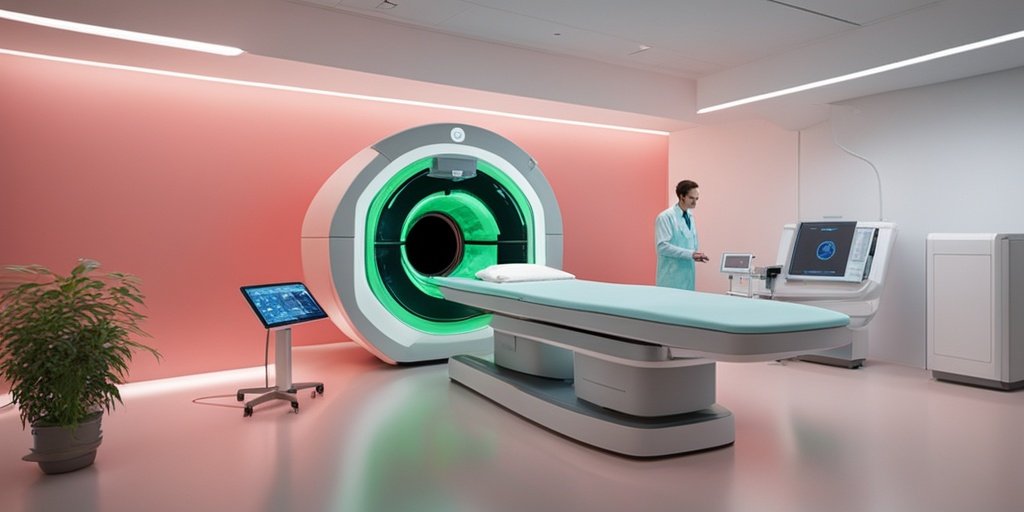⚡ Quick Summary
This article explores the CT measurement of blood perfusion in hepatocellular carcinoma (HCC), highlighting its evolution from invasive techniques to advanced non-invasive methods. The findings suggest that accurate blood perfusion measurements can serve as a new biomarker for tumor activity, enhancing diagnosis and treatment strategies.
🔍 Key Details
- 📊 Focus: Blood perfusion in hepatocellular carcinoma (HCC)
- 🧩 Techniques discussed: Semi-quantitative, relative quantitative, and absolute quantitative CT methods
- ⚙️ Evolution: Transition from invasive to non-invasive CT techniques over the last 30 years
- 🏆 Clinical significance: Potential use of blood perfusion as a biomarker for tumor activity
🔑 Key Takeaways
- 🩸 HCC is a common and fatal tumor, particularly prevalent in China.
- 💡 Blood supply shifts from the portal vein to the hepatic artery during HCC progression.
- 📈 CT imaging technology has improved the assessment of organ and tissue perfusion.
- 🔬 Measurement techniques have evolved significantly, enhancing diagnostic capabilities.
- 🌟 Future applications may include integration with radiation therapy and artificial intelligence.
- 🗺️ Study published in Zhonghua Zhong Liu Za Zhi, 2024.
- 🆔 PMID: 39414594.

📚 Background
Hepatocellular carcinoma (HCC) is recognized as one of the most prevalent and deadly cancers globally, with a particularly high incidence in China. Understanding the blood supply dynamics in HCC is crucial, as it shifts from the healthy liver’s primary source, the portal vein, to the hepatic artery during tumor development. This change in vascularization is vital for various medical interventions, including imaging, surgery, and targeted therapies.
🗒️ Study
The study provides a comprehensive overview of the CT measurement techniques for assessing blood perfusion in HCC. It categorizes these techniques into three main types: semi-quantitative, relative quantitative, and absolute quantitative. Each category is discussed in terms of its basic principles, scanning methods, and clinical applications, offering valuable insights for healthcare professionals involved in HCC diagnosis and treatment.
📈 Results
The findings indicate that the advancements in CT imaging technology over the past three decades have made it possible to assess organ and tissue perfusion with greater ease and accuracy. The study emphasizes the importance of these measurements in guiding treatment decisions and improving patient outcomes in HCC management.
🌍 Impact and Implications
The implications of this research are significant. By utilizing blood perfusion measurements as a biomarker for tumor activity, clinicians can enhance their diagnostic capabilities and tailor treatment strategies more effectively. Furthermore, as radiation therapy technologies evolve, integrating these measurements could lead to more precise and personalized treatment plans for HCC patients.
🔮 Conclusion
This study underscores the critical role of CT measurement techniques in the management of hepatocellular carcinoma. As we continue to refine these methods and explore their applications in conjunction with emerging technologies, the potential for improved patient outcomes in HCC treatment becomes increasingly promising. Continued research in this area is essential for advancing our understanding and management of this challenging disease.
💬 Your comments
What are your thoughts on the advancements in CT measurement techniques for HCC? We invite you to share your insights and engage in a discussion! 💬 Leave your comments below or connect with us on social media:
[CT measurement of blood perfusion in hepatocellular carcinoma: from basic principle, measurement methods to clinical application].
Abstract
Hepatocellular carcinoma (HCC) is one of the common and fatal malignant tumors worldwide, and the burden of HCC is particularly severe in China. Physiologically, the blood supply to healthy liver is mainly from the portal vein, supplemented by the hepatic artery. While in the development of HCC, the main source of blood supply to HCC is changed from the portal vein to the hepatic artery. The characteristics of HCC vascularization are important for imaging, surgery, interventional therapy, targeted therapy, etc. Even in the future, with the development of radiation therapy technology, such as proton and heavy ion therapy and artificial intelligence technology, the dynamic changes in HCC blood perfusion can be used as a new biomarker of tumor activity to provide accurate information on the intensity modulation of radiotherapy, so that accurate measurements of HCC blood perfusion is of great significance in guiding the diagnosis and treatment of HCC. The technologies for measurement of HCC blood perfusion have developed from invasive techniques, such as inert gas scavenging, electromagnetic flowmeter, and radionuclide-labeled erythrocyte elution in the middle of the last century to the present non-invasive techniques of CT. With the development of CT imaging technology in the last 30 years, the CT-based imaging technology can assess the status of organ and tissue perfusion relatively easily and accurately. In this paper, the various CT measurement techniques of blood perfusion in HCC were categorized into three types: semi-quantitative technique, relative quantitative technique, and absolute quantitative technique. Their basic principle, scanning methods, and clinical applications were discussed to provide a reference for the diagnosis and treatment of HCC.
Author: [‘Li YK’, ‘Wang QB’, ‘Liang YB’, ‘Ke Y’]
Journal: Zhonghua Zhong Liu Za Zhi
Citation: Li YK, et al. [CT measurement of blood perfusion in hepatocellular carcinoma: from basic principle, measurement methods to clinical application]. [CT measurement of blood perfusion in hepatocellular carcinoma: from basic principle, measurement methods to clinical application]. 2024; 46:940-947. doi: 10.3760/cma.j.cn112152-20240605-00240